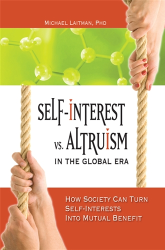Let us examine the sub-surface processes that unfolded between the writing of The Book of Zohar (also called The Zohar for short) in the 2nd century C.E. and the writing of the Tree of Life in the 16th century. These dates (very) roughly parallel the period between the Roman conquest of Judea and the onset of the Renaissance, or what we now call “the Middle Ages.” The goal is not to focus on particular events, but to provide a “bird’s-eye” view of history, showing how processes correspond to the evolution of desires. In the case of the time frame just mentioned, it is probably best to begin with the Roman conquest and the ruin of the SecondTemple.
How Unfounded Hatred Destroyed the Unity of Israel
The defeat of the Jewish revolt against the Romans (66-73 CE) caused the ruin of the SecondTemple and the dispersion of Judea. (The first Temple was built by King Solomon in the 10th century BCE, and was ruined by the Babylonians in 586 BCE.) This dispersion signified something far more important than the conquest of one nation by another. It reflected the extent of the Israeli nation’s spiritual decline. The Hebrew word Yehudi (Jew) derives from the word Yechudi (“united,” or “unique”), referring to the state of the Israeli nation of the time: perceiving (and adhering to) the unique force of bestowal that governs life.
Yet, the desire to receive is an ever-evolving force and requires constant adaptation. Constant effort is required to harness the newly emerging desires to work in unison—with the intention to bestow, and adhering to the law of yielding self-interest in favor of the interest of the host system. And because the desires evolve, the means to harness them must evolve accordingly.
Unlike animals, humans must constantly realize their place in Nature and choose to be constructive parts of it. However, if we act to the contrary, the negative outcome will not be immediately evident. This leaves us room to maneuver and to calculate.
At the same time, if we choose to act in accord with Nature’s law, we will not immediately notice the positive result. Thus, because the reward and punishment are not immediately discernible, if we choose to do so nonetheless, it will be only because we want to discover Nature’s law of unity and giving, and not because we expect an immediate reward. In this way, we act out of an intention to become givers instead of out of our inherent desire to receive.
But during the first century CE, the evolution of the desire to receive prompted the emergence of a new level of desire. Until the arrival of that level, the Jews that returned from the exile in Babylon—after the ruin of the first Temple—kept their unity and their perception of the cohesive law of life.
In truth, only two of the twelve tribes returned from their Babylonian exile because the level of egoism was also growing among Israel, and the majority of the tribes could not resist the egoistic drives within them. These drives separated them from the nation of Israel, which consists, as explained, of people who live by the law of unity, and not of genetically related individuals. But when Stage Two in the evolution of desires began to manifest in Israel, even those who returned from Babylon could not maintain their altruism. Instead, they fell prey to their self- centered desires.
The Babylonian Talmud explains that the sole reason for the defeat of Israel and the ruin of the SecondTemple was unfounded hatred: “The SecondTemple, why was it ruined, since they engaged Torah and Mitzvot [spiritual learning] and in good deeds? It was because there was unfounded hatred in it.” In the absence of unity, and because many Jews wished to emulate or even join the Roman culture, the Jewish revolt was hopeless from the start.
So How Easily You Can Understand Why Kabbalah Was Hidden for So Long
Still, even after the revolt, many among Israel maintained their cohesive perception of reality. Rabbi Akiva, for example, whose Talmudic epithet was “Head of all the Sages,” lived and taught in the years following the ruin. According to the Babylonian Talmud, Rabbi Akiva had 24,000 students, but they, too, died (according to the Talmud) because they were not united.
Of the 24,000 students, only four survived. And of those four, two became the greatest sages of their generation, and possibly of all time. The first was Rabbi Yehuda, known as Rabbi Yehuda HaNasi (the president), who became president of the Sanhedrin and chief redactor and editor of the Mishnah, the corpus that is the foundation on which both parts of the Talmud are built. The other student was Rabbi Shimon Bar-Yochai (Rashbi), who became known as the author of The Book of Zohar [The Book of Radiance]—the seminal book of Kabbalah, which all Kabbalists study to this day and from which they all derive their wisdom.
Through the centuries, there have always been sages who kept the wisdom vibrant and evolving. They understood the nature of the desire to receive and produced texts that interpreted The Zohar, as well as other books of Kabbalah. Yet, for the most part, their books—written from the Kabbalistic-altruistic perception of reality—were misunderstood by all except for fellow Kabbalists because they were read from an egoistic perception. This prevented readers from grasping the true meaning of the texts. In much the same way, a person who is blind from birth cannot understand the meaning of vision, much less the joy that comes from observing a beautiful landscape or the captivating power of the view of an ocean’s stormy shore.
Thus, because of the decline of the spiritual perception (altruism) among Israel, Abraham’s dream of teaching the entire world the single law of existence had to be postponed until people were once again ready to learn about this law. The Zohar was concealed soon after its completion and remained hidden for more than a millennium. Kabbalists, too, cloaked the wisdom in mystery and misconception, and declared that only those who met rigorous conditions were permitted to study it. Since they knew that the majority of people were too far removed from spiritual perception to properly grasp the concepts of Kabbalah, Kabbalists distracted people’s minds with stories of miracles and charms, and set up boundaries such as age, sex, and marital status to deter would-be students from probing Kabbalah.
The Link between Pythagoras, Philosophy & Kabbalah
Indeed, the misperceptions of Kabbalah were so deeply rooted that even after the reappearance of The Zohar in 13th century Spain in the possession of Rabbi Moshe de León, the book was often misunderstood and considered abstruse text until such Kabbalists as the vilna Gaon (GRA), Rabbi Isaac Safrin, and others offered clearer interpretations. Even so, it was not until the 1940s, when Yehuda Ashlag (Baal HaSulam) offered his complete Sulam (Ladder) commentary on The Book of Zohar—with four explanatory introductions—that this profound composition could be properly studied and comprehended.
But in the early post-ruin-of-Second-Temple years, the world was treading a very different route. The Romans were the empire in the Mediterranean, Near East, and Europe, and their (essentially Greek) culture and philosophy reigned. The Hellenistic perception of the world did not agree with that of the rebels from the land of Israel. Moreover, the majority of Jews did not agree with the principles of their forefathers, and abandoned them in favor of the ego-centered Hellenistic Greek- Roman culture.
That said, several renowned scholars of the renaissance believed that the Greeks did adopt at least some of their concepts from Kabbalah. Johannes Reuchlin (1455-1522), for example, the great humanist and political counselor to the Chancellor, wrote the following in his De Arte Cabbalistica (On the Art of Kabbalah): “Nevertheless his [Pythagoras’] preeminence was derived not from the Greeks, but again from the Jews. As ‘one who received,’ he can quite justly be termed a Kabbalist. …He himself was the first to convert the name Kabbalah, unknown to the Greeks, into the Greek name philosophy.”
A predecessor of Reuchlin, Giovanni Pico della Mirandola (1463-1494), an Italian scholar and Platonist philosopher, wrote in his De Hominis Dignitate Oratio (Oration on the Dignity of Man), “This true interpretation of the law, which was revealed to Moses in Godly tradition, is called ‘Kabbalah.’”
But the principle that the Greeks did not adopt was the most important one of all: the intention to revoke self-centeredness in favor of system-centeredness in order to become like the Creator. The latter part of that phrase, the reason for shifting one’s focus, is the reason why the wisdom Kabbalah was devised to begin with. Had the Greeks adopted it, history would have unfolded very differently.
The History of How the Jews Lost their Spiritual Perception
Yet, it was through no fault of the Greeks that they did not adopt it. They did not know about it, as there were no Kabbalist teachers among them, and hence none who could educate them properly. Moreover, having heightened egos themselves, the Jews, too, were adopting the Greek-Roman ways, and those who were not were the Romans’ fiercest enemies in Judea. In consequence, there was no one to show the Romans that they were missing anything that could be of value to them. And so the Romans pursued the Hellenistic culture until Emperor Constantine the Great adopted Christianity in the 4th century CE.
The Jews’ adoption of the Hellenistic culture was no coincidence. The establishment of the first Temple had marked the highest spiritual point (perception of the law of giving) in the history of the Israeli nation. from then on, a gradual process of decline was underway. The evolution of desires was affecting the Jews just as it was affecting all other nations. As a result, many of the Jews could not maintain their spiritual, altruistic perception of a unified force, and turned to more self-centered cultures that suited their egoistic perception.
Thus, the Babylonian conquest and subsequent exile of the Hebrews at the time of the first Temple were only a manifestation of their spiritual state at the time. And because of the waning spiritual state of the Hebrews in Babylonian captivity, only two of the twelve tribes that went into exile, Judah and Benjamin, returned. The ten tribes that remained in exile became so thoroughly mingled with the locals that they had completely forgotten their tenets, and their traces have been lost to this day.
Yet, the evolution of desires did not stop there. Judah and Benjamin gradually declined, as well, and the complete dispersion of the Jews was only a matter of time. Indeed, the Jews’ loss of spiritual perception was a long process that spanned centuries, but its course was set. When the Romans finally conquered Israel and destroyed the Second Temple, Israel was already a nation whose majority did not want to maintain its spiritual (Kabbalistic) mindset and preferred the Hellenistic concepts in its stead. In consequence, they, too, were exiled and dispersed. And while many Jews remained in the land of Israel even after the Roman conquest, and compiled some of the most significant texts in Judaism, the Jews as a people were already spreading throughout Rome and subsequently Europe.
 “How the Exile of the Jews Corresponds to the Evolution of Human Desire” is based on the book, Self Interest vs. Altruism in the Global Era: How Society Can Turn Self Interests into Mutual Benefit by Dr. Michael Laitman.
“How the Exile of the Jews Corresponds to the Evolution of Human Desire” is based on the book, Self Interest vs. Altruism in the Global Era: How Society Can Turn Self Interests into Mutual Benefit by Dr. Michael Laitman.

